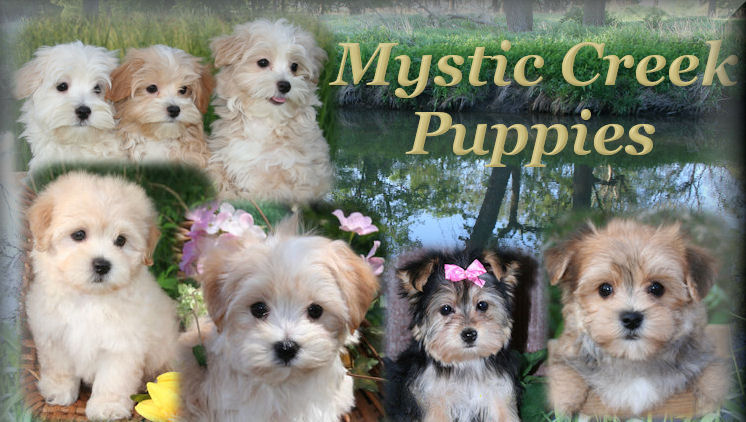
Home ~ Maltipoo Puppies for Sale ~ Contact Us
AKC Maltese Puppies for Sale ~ Testimonials ~ Puppy Care
 |
|
Why a Hybrid? Years ago people who wanted a dog had two choices...get a purebred or a mutt. In the last 20 years there has been the introduction of a third option...intentional hybrids. People who decide upon intentional hybrids such as the Maltipoo have done so for many reasons. A high percentage of the people choose a hybrid for the reasons that are outlined below.
Why a hybrid dog? A hybrid puppy has two purebred parents of different breeds. This intentional mix of breeds allows us to have the predictability of the purebred, while maintaining the genetic diversity of a mixed breed dog. A hybrid puppy's characteristics will fall within the range of the two breeds his parents are from. All of our puppies are either first generation (F1) crosses or F1b (one purebred parent and one mixed breed parent) depending which traits we are looking for in our puppies. We carefully select each parent for the characteristics that would result in Maltipoo puppies with the most desirable pet qualities. The hybrids are bred just to be a perfect pet for you.
What are the advantages of having a purebred dog?
Purebreds provide predictability with respect to size, color, coats,
temperament and traits. If you want a friendly dog or an aloof dog, a
high-energy dog or a low-energy dog, a small dog or a large dog, a dog
with lots of fur or a dog with very short fur, you can choose a purebred
that tends to have those characteristics. The parents produce
offspring that are totally predictable.......they will be just like
their parents.
Disadvantages to a Purebred
Over 300 genetic health defects have been documented in purebred dogs,
the incidence of defects is extremely high.
Reasons for this include:
According to AKC statistics, there is a 40% mortality rate for purebred
dogs in puppy hood.
What are the advantages to a Mutt? Because their genes are usually unrelated, the chances are good that the parents of a mutt puppy did not both have the same defective genes. It is the pairing up of the same defective genes that cause some of the worst health problems seen in most purebred dogs. Most mutt dogs have good genetic diversity, which tends to promote overall health and vigor.
Disadvantages to a Mutt
A mutt isn't usually intentional. It is almost unheard of for a mutt dog
to have even one parent who has been tested for any genetic disorder.
With a mutt, you have to put your faith in his genetic diversity, rather
than in medical testing and breed specific traits.
If you get a mutt which looks like a combination of two breeds, it does
not assure that only those two breeds created the puppy or, for that
matter, those breeds were involved at all. A mutt could have many many
other combinations of breeds to create the dog. Thus, you might be able
to have a hint as to the temperament of the dog, you also might have a
hint on how large or small the dog will be, or what type of fur the dog
will have, but you will never know for sure until the dog has fully
matured. You must be willing to accept whatever size, coat type
and shedding your puppy has, as all their characteristics won't be
evident until they are adults.
A mutt, all too frequently, has not had the benefit of a good start in
life. Proper medical care, proper socialization, and breeder knowledge
can be missing in an unintentional breeding.
|
|
|